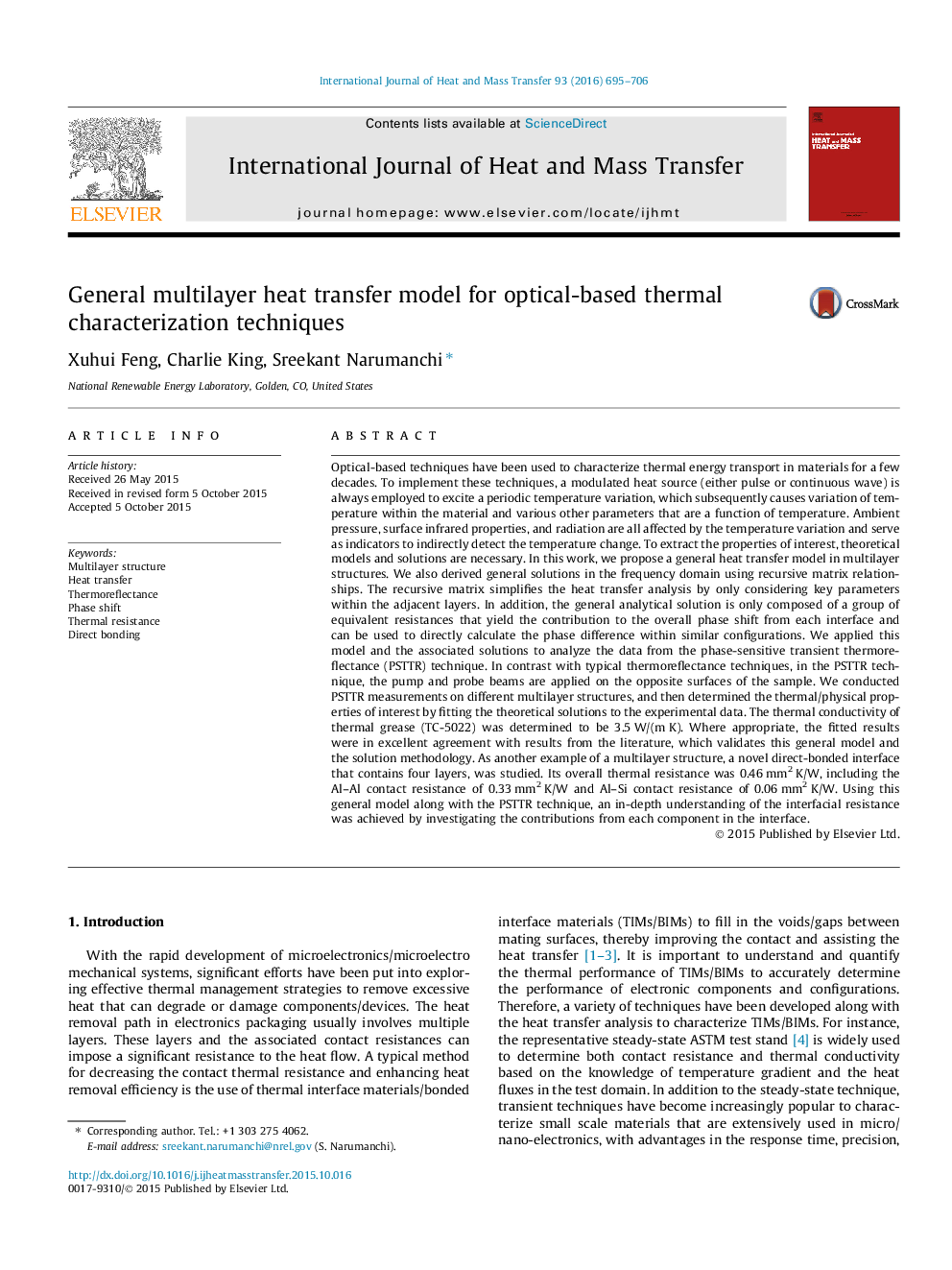| Article ID | Journal | Published Year | Pages | File Type |
|---|---|---|---|---|
| 7056152 | International Journal of Heat and Mass Transfer | 2016 | 12 Pages |
Abstract
Optical-based techniques have been used to characterize thermal energy transport in materials for a few decades. To implement these techniques, a modulated heat source (either pulse or continuous wave) is always employed to excite a periodic temperature variation, which subsequently causes variation of temperature within the material and various other parameters that are a function of temperature. Ambient pressure, surface infrared properties, and radiation are all affected by the temperature variation and serve as indicators to indirectly detect the temperature change. To extract the properties of interest, theoretical models and solutions are necessary. In this work, we propose a general heat transfer model in multilayer structures. We also derived general solutions in the frequency domain using recursive matrix relationships. The recursive matrix simplifies the heat transfer analysis by only considering key parameters within the adjacent layers. In addition, the general analytical solution is only composed of a group of equivalent resistances that yield the contribution to the overall phase shift from each interface and can be used to directly calculate the phase difference within similar configurations. We applied this model and the associated solutions to analyze the data from the phase-sensitive transient thermoreflectance (PSTTR) technique. In contrast with typical thermoreflectance techniques, in the PSTTR technique, the pump and probe beams are applied on the opposite surfaces of the sample. We conducted PSTTR measurements on different multilayer structures, and then determined the thermal/physical properties of interest by fitting the theoretical solutions to the experimental data. The thermal conductivity of thermal grease (TC-5022) was determined to be 3.5 W/(m K). Where appropriate, the fitted results were in excellent agreement with results from the literature, which validates this general model and the solution methodology. As another example of a multilayer structure, a novel direct-bonded interface that contains four layers, was studied. Its overall thermal resistance was 0.46 mm2 K/W, including the Al-Al contact resistance of 0.33 mm2 K/W and Al-Si contact resistance of 0.06 mm2 K/W. Using this general model along with the PSTTR technique, an in-depth understanding of the interfacial resistance was achieved by investigating the contributions from each component in the interface.
Keywords
Related Topics
Physical Sciences and Engineering
Chemical Engineering
Fluid Flow and Transfer Processes
Authors
Xuhui Feng, Charlie King, Sreekant Narumanchi,
